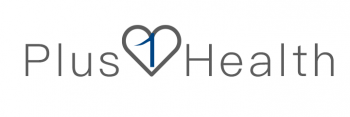1. Gyroscope
Gyroscope is the most commonly used sleep monitoring sensor, and it is also the earliest and lowest-end sleep monitoring sensor. In essence, it uses the built-in gyroscope of the mobile phone to monitor our body movement data to judge our sleep status.
Human sleep patterns can be basically divided into five phases and two phases, the most important of which are two phases: non-rapid eye movement sleep (NREM) and rapid eye movement sleep (REM).
Basically our sleep alternates between these two phases throughout the night, and the cycle starts over and over again. Generally speaking, when a person is in NREM, the body is basically in a static state, and most of the turning over, or conscious/unconscious movements occur during REM.
The body movement feature is actually based on identifying whether we are currently in NREM or REM, and determine whether we are in deep sleep, light sleep and wakefulness. This is not a problem for 99% of today’s smart phones, and even many smart bracelets with sleep monitoring actually use the built-in gyroscope to determine whether the user has physical activity, so as to judge and count our sleep status.
But the biggest problem with gyroscope monitoring is the high rate of misjudgment: on the one hand, when we are physically moving, it is not necessarily that the hand wearing the bracelet is moving, it may be that other parts of the body are moving, but the system thinks that you are still in the NREM state; On the one hand, it is easy to be disturbed by the outside world. Maybe you did not move, but the person next to you turned over. As a result, the system mistakenly thought that you moved, so it was counted to REM.
2. Bone conduction
Both of them are actually micro-motion sensors, but compared with gyroscopes, their body motion monitoring accuracy is significantly improved, and the sleep information that can be monitored is more abundant, so they are generally used for mid-to-high-end sleep monitoring product.
Bone conduction technology was first known as a means of sound transmission. Traditional sound transmission relies on air vibration acting on the tympanic membrane to allow us to hear sound, and bone conduction, as its name suggests, passes through the skull,bone labyrinth,inner ear lymph,spiral,auditory nerve,cerebral cortex auditory center to transmit and receive.
There is actually a throat microphone in the application of bone conduction. It actually uses the slight vibration of the bones caused by people’s speech to collect sound signals and convert them into electrical signals. The human body, whether it is physical movement, breathing, snoring, or even heartbeat, will actually cause slight vibrations on the body surface. If the accuracy of the sensor is high enough, it can actually collect signals and identify them one by one through algorithms.
3. Piezoelectric film
The principle of piezoelectric film is actually similar to that of bone conduction technology. It generates corresponding electrical signals by measuring the pressure changes acting on it by the body. However, the advantage of piezoelectric film is that it can be easily widened. Compared with bone conduction, which can only be measured in point form, piezoelectric film can monitor the entire surface. Of course, the cost will naturally increase a lot, so sleep monitoring equipment using piezoelectric films will be much more expensive than other technologies.
Piezoelectric film also has an advantage. Whether it is a gyroscope or bone conduction, it must be worn on the body, even if it is not worn, it must be used close to the body, which is determined by the monitoring accuracy of the sensor itself. The piezoelectric film has higher precision, so it can be monitored across the entire mattress.
4. Bioradar
There are not many products currently used. Bio-radar actually uses radar technology to detect important information such as human respiration, heartbeat and body movement without contact by emitting electromagnetic waves.
At present, this technology is mainly used in the fields of medical treatment and disaster relief, and there are not many applications of civilian-grade products. There are two reasons: 1. High cost; 2. There is a small amount of electromagnetic radiation.
Of course, it doesn’t make sense to just monitor the data without analyzing it. The role of sleep monitoring is to obtain accurate data for analyzing the user’s sleep situation and giving suggestions for improvement.
The sleep recorder of Plus1Health adopts piezoelectric film sensor, which is non-sensing and non-contact human monitoring. It is safe and reliable, the monitoring data is accurate, and the report and analysis are timely and quickly issued.
